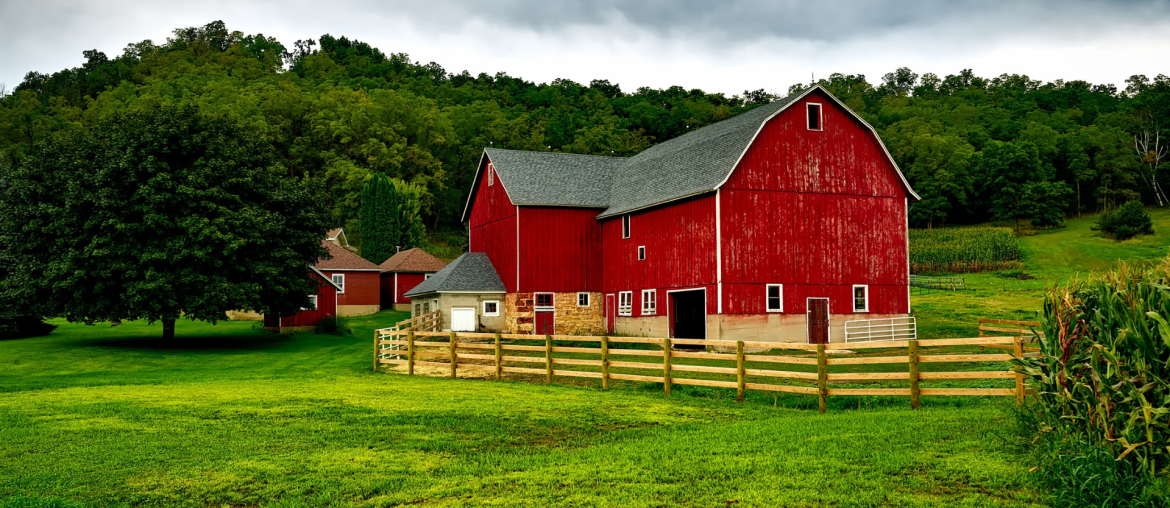Farming is both an art and a science, requiring a balance of hard work, innovation, and efficiency. With the right strategies, you can make your farming operations more productive and enjoyable. This comprehensive guide will reveal some of the best farm hacks that can help you optimize your workflow, save time, and reduce costs. From clever tool organization to sustainable practices, these tips are designed to make your farm run like a well-oiled machine.
1. Optimize Tool Storage with Pegboards
One of the simplest yet most effective farm hacks is organizing your tools using pegboards. Pegboards allow you to keep your tools visible and accessible, reducing the time spent searching for them. Customize your pegboard with hooks and shelves to accommodate various tools, and outline each tool’s position to ensure they always return to their proper place.
2. DIY Automatic Chicken Waterer
Keeping your chickens hydrated can be a time-consuming task. A DIY automatic chicken waterer can save you hours of work each week. Use a five-gallon bucket and poultry nipples to create a gravity-fed waterer. Drill holes in the bottom of the bucket, insert the nipples, and suspend the bucket at an appropriate height. Your chickens will enjoy clean water, and you’ll enjoy the convenience.
3. Use Pallets for Easy Compost Bins
Composting is essential for sustainable farming, and creating compost bins from pallets is an inexpensive and efficient solution. Arrange four wooden pallets in a square, securing them with screws or zip ties. This structure provides excellent airflow, essential for effective composting. Plus, using recycled pallets is an environmentally friendly choice.
4. Solar-Powered Electric Fencing
Protecting your crops and livestock from predators is crucial. Solar-powered electric fencing is a sustainable and cost-effective way to keep your farm secure. These systems use solar panels to charge batteries, ensuring your fences remain electrified even in remote areas. They are easy to install and maintain, offering long-term savings and peace of mind.
5. Implement Crop Rotation Strategies
Crop rotation is a time-tested technique that improves soil health and reduces pest problems. Plan your planting schedule to rotate crops that consume different nutrients and support soil fertility. For example, follow nitrogen-fixing legumes with nitrogen-demanding crops like corn. This method enhances soil structure, increases yields, and minimizes the need for chemical fertilizers.
6. Rainwater Harvesting Systems
Conserve water and reduce utility costs by installing a rainwater harvesting system. Collect rainwater from your roof using gutters and store it in large barrels or tanks. This water can be used for irrigation, livestock, and even household needs. Ensure your system includes a filtration component to keep the water clean.
7. Repurpose Old Tires for Planters
Old tires can be transformed into durable and practical planters. Cut the tires in half, fill them with soil, and plant your crops. These tire planters are particularly useful for growing potatoes and other root vegetables. They are resilient, retain heat well, and help recycle materials that would otherwise end up in a landfill.
8. Create a Mobile Chicken Coop
A mobile chicken coop, or chicken tractor, allows you to move your chickens around your farm, providing them with fresh grazing areas and natural pest control. Construct a lightweight coop on wheels, ensuring it is secure and has adequate ventilation. Moving the coop regularly helps fertilize your soil and keeps your chickens healthy.
9. Mulch to Suppress Weeds and Retain Moisture
Mulching is an excellent way to control weeds, retain soil moisture, and improve soil health. Use organic materials like straw, wood chips, or grass clippings as mulch around your plants. This practice reduces the need for chemical herbicides and irrigation, promoting a healthier and more sustainable farm ecosystem.
10. DIY Drip Irrigation System
Efficient water usage is critical in farming. A DIY drip irrigation system ensures your plants receive water directly at the roots, minimizing waste. Use inexpensive materials like PVC pipes or hoses, punch small holes along the length, and connect them to your water source. This method saves water, reduces evaporation, and improves plant health.
11. Utilize Cover Crops for Soil Health
Cover crops, such as clover or rye, play a vital role in maintaining soil health. Plant cover crops during off-seasons to prevent soil erosion, improve soil structure, and add organic matter. These plants also suppress weeds and provide habitats for beneficial insects. Incorporating cover crops into your farming routine enhances long-term soil fertility.
12. DIY Raised Garden Beds
Raised garden beds are perfect for maximizing space and improving soil quality. Build your own using materials like wood, bricks, or cinder blocks. Raised beds offer better drainage, reduce soil compaction, and make it easier to manage weeds. They are also ideal for farmers with limited space or poor soil conditions.
13. Recycle Greywater for Irrigation
Recycling greywater from household use (such as water from sinks, showers, and washing machines) can significantly reduce water usage on your farm. Install a greywater system to filter and redirect this water to your fields or garden. This sustainable practice not only conserves water but also lowers utility bills.
14. Use Vinegar as a Natural Herbicide
Chemical herbicides can be harmful to the environment and expensive. Vinegar is an effective, natural alternative for weed control. Use a spray bottle to apply vinegar directly to weeds on sunny days for the best results. This method is particularly effective for small-scale weed management in garden beds and pathways.
15. DIY Hydroponic Systems
Hydroponic systems allow you to grow plants without soil, using nutrient-rich water instead. DIY hydroponic setups can be created with materials like PVC pipes, plastic containers, and aquarium pumps. This method is highly efficient, using less water and space compared to traditional soil farming, and can produce higher yields.
16. Install Owl Boxes for Natural Pest Control
Encouraging natural predators is a great way to manage pests on your farm. Owls are effective at controlling rodent populations. Install owl boxes around your property to attract these nocturnal hunters. This eco-friendly pest control method reduces the need for poisons and traps, promoting a balanced farm ecosystem.
17. Create a Seed Starting Station
Starting your plants from seeds can save money and provide stronger, healthier plants. Set up a seed starting station with shelves, grow lights, and heat mats. This controlled environment ensures optimal growing conditions for your seedlings, leading to a successful growing season.
18. Utilize Solar Power for Farm Operations
Harnessing solar power can significantly reduce your farm’s energy costs. Install solar panels to power electric fences, water pumps, and lighting systems. Solar energy is renewable, environmentally friendly, and can provide reliable power even in remote locations. This investment pays off in long-term savings and sustainability.
19. Homemade Fly Traps for Livestock Areas
Flies can be a nuisance in livestock areas. Create homemade fly traps using plastic bottles, bait (like sugar water or apple cider vinegar), and dish soap. Cut the top off the bottle, invert it into the bottom section, and fill with bait. Flies are attracted to the bait and get trapped, reducing their population naturally.
20. Plant Native Species for Low-Maintenance Landscaping
Incorporate native plants into your farm’s landscaping to reduce maintenance and water usage. Native species are adapted to local conditions, requiring less water, fertilizer, and pest control. They also support local wildlife and promote biodiversity, contributing to a healthier farm environment.
Conclusion
Implementing these farm hacks can lead to a more efficient, sustainable, and enjoyable farming experience. Whether you’re a seasoned farmer or just starting out, these tips can help you maximize productivity while minimizing costs and environmental impact. Embrace these innovative strategies to take your farm to the next level.
By integrating these farm hacks into your daily routine, you can enhance your farm’s productivity and sustainability. Remember, the key to successful farming is continuous improvement and innovation. Start with a few of these tips and gradually incorporate more to see a significant difference in your farm’s operations. Happy farming!





Comments are closed.